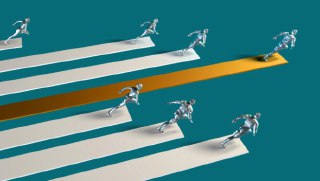Unlocking Team Potential: Building High-Performance Groups in the AI Era
Process 2.0: How to Build High-Performance Teams in the Age of AI Agents
As we move deeper into an era dominated by artificial intelligence, organizations are confronting a reality where the synergy between human creativity and AI efficiency is not only advantageous but essential. The future of high-performance teams hinges on a paradigm shift: the integration of AI agents into team processes.
The New Collaborative Landscape
Imagine a scenario where project teams consist of both skilled human professionals and advanced AI agents. The role of the human team members evolves into that of strategists, innovators, and decision-makers, while AI agents handle data analysis, routine tasks, and predictive modeling. This collaborative environment fosters a productivity boom.
Future Possibilities for Team Performance
- Enhanced Decision Making: AI can process vast amounts of data in real-time, offering insights that inform strategic decisions.
- Improved Speed and Efficiency: Tasks that traditionally took hours or days can be completed in minutes, freeing up human resources for high-value activities.
- Adaptive Learning: AI systems evolve by learning from their interactions, making them better suited to support team performance over time.
- Cost Reduction: Automating routine tasks enables organizations to allocate resources more efficiently, reducing overhead costs.
Hypothetical Situations
Consider a software development team that employs an AI-driven coding assistant. This assistant learns the team’s coding conventions and efficiently suggests code snippets, identifies bugs, and even predicts project timelines based on previous data. Developers spend less time on mundane coding tasks and more time designing innovative features.
In another scenario, a marketing department uses AI agents to analyze customer behavior patterns across various platforms. The insights generated lead to hyper-targeted marketing campaigns, resulting in significantly higher engagement rates and conversion metrics. Data-driven campaign adjustments happen in real-time, adapting to consumer behavior as it evolves.
Challenges and Considerations
While the benefits are prominent, organizations must also navigate potential challenges such as:
- Change Management: Transitioning to a hybrid team requires a cultural shift within the organization.
- Integration: Ensuring AI systems are seamlessly integrated into existing workflows to avoid disruptions.
- Ethics and Accountability: Defining roles and responsibilities between human team members and AI agents to maintain accountability.
Business Benefits and ROI
Implementing AI agents within high-performance teams can yield substantial benefits:
- Increased Productivity: Organizations have seen productivity boosts of up to 40% by automating workflows.
- Cost Savings: Businesses can reduce operational costs by approximately 30% by minimizing manual labor through AI automation.
- Time Efficiency: Teams are able to expedite project timelines by an average of 25%, improving the speed of innovation.
Action Steps for Implementation
To harness the benefits of AI in team dynamics, businesses should consider the following actions:
- Assess Current Processes: Evaluate existing workflows to identify tasks that can be automated or enhanced with AI support.
- Select the Right AI Tools: Choose AI solutions that align with team goals and can be easily integrated into workflows.
- Train Team Members: Provide training sessions to ensure team members are equipped to work alongside AI technologies.
- Monitor and Adjust: Regularly review team performance metrics and AI contributions to fine-tune the system and maximize effectiveness.
Conclusion
As organizations embrace the age of AI, the impact on team performance is profound. By thoughtfully integrating AI agents into team dynamics, businesses can unlock unprecedented levels of productivity, creativity, and innovation. The future lies in harnessing the strengths of both human and machine. Schedule a consultation with our team today to explore how you can implement these strategies for building high-performance teams in your organization.


